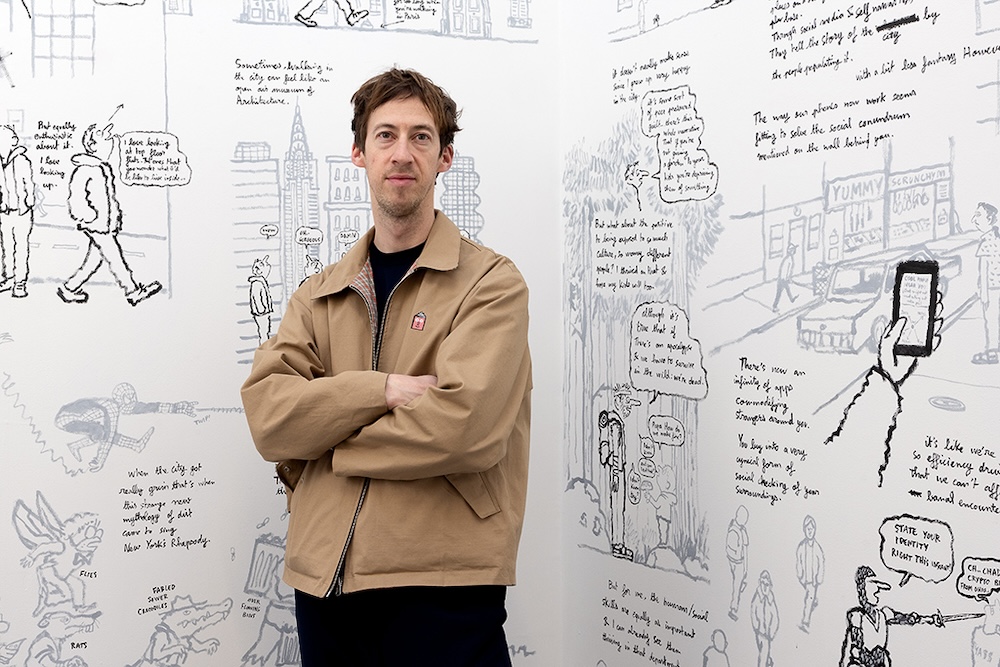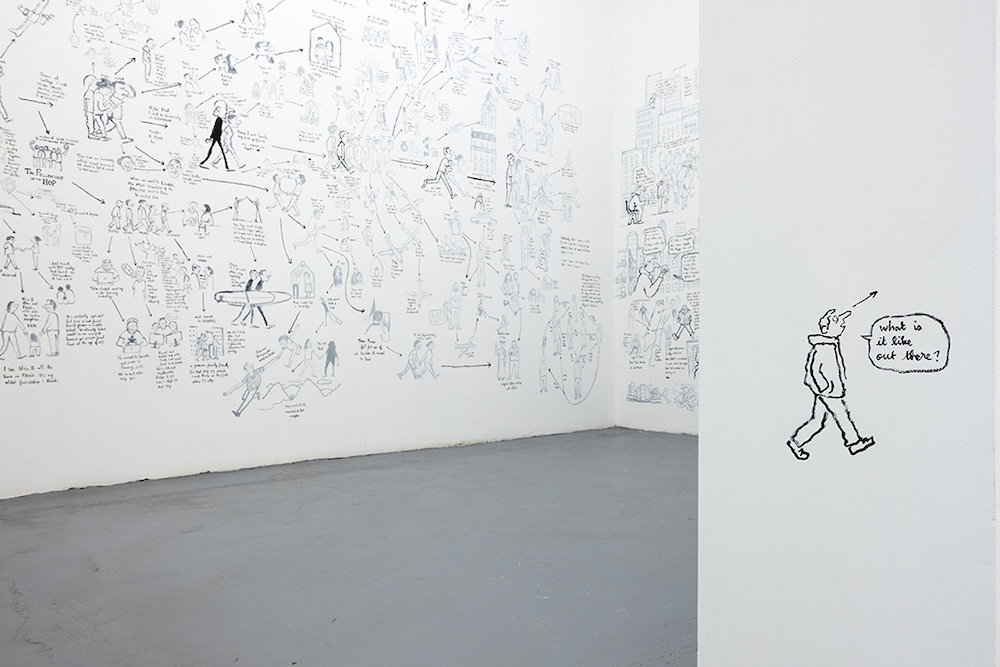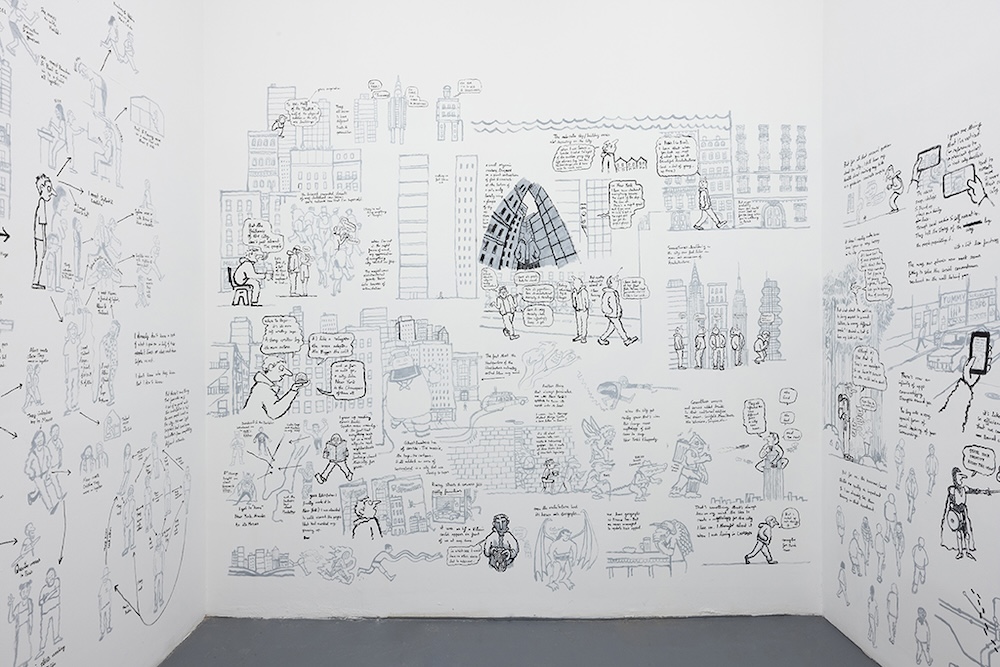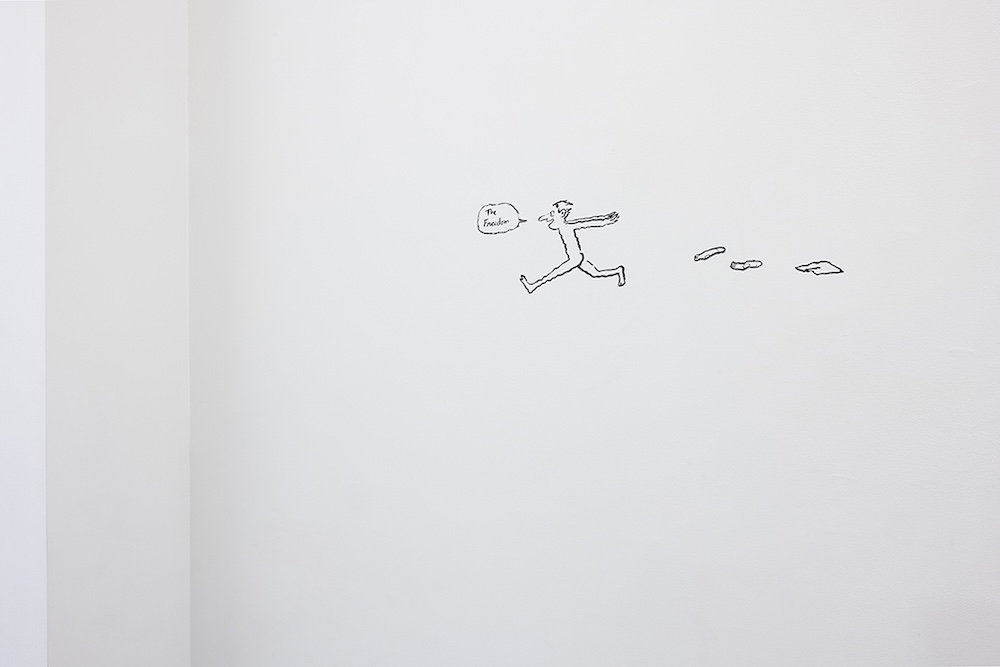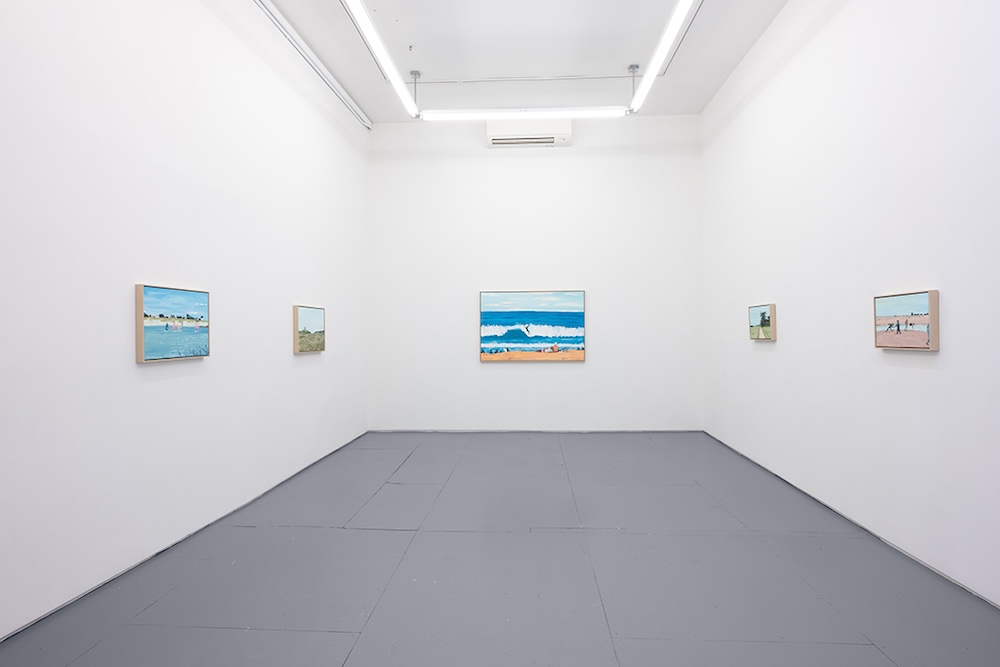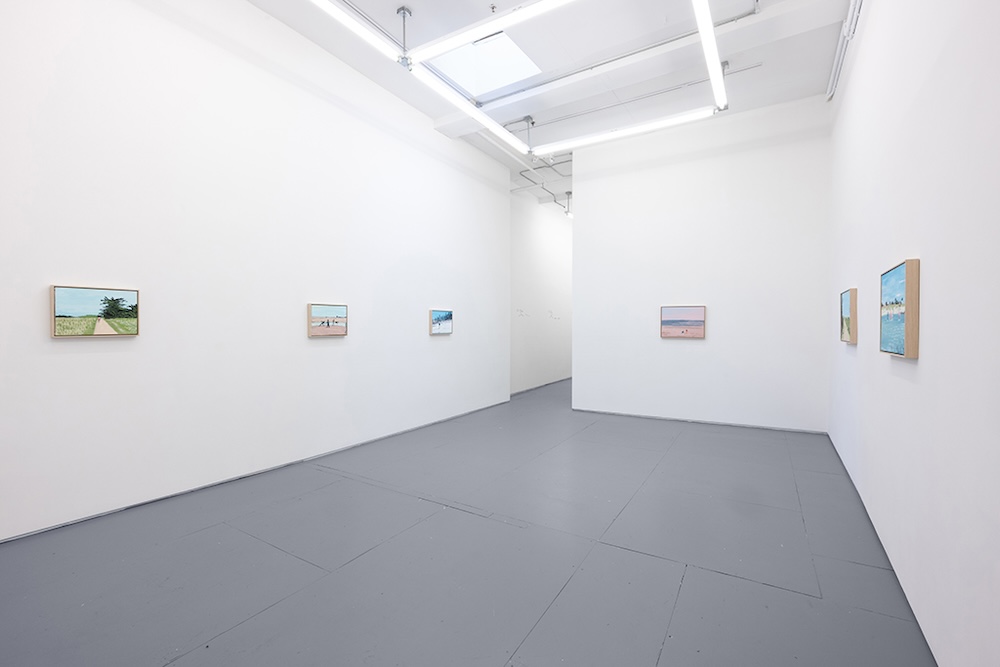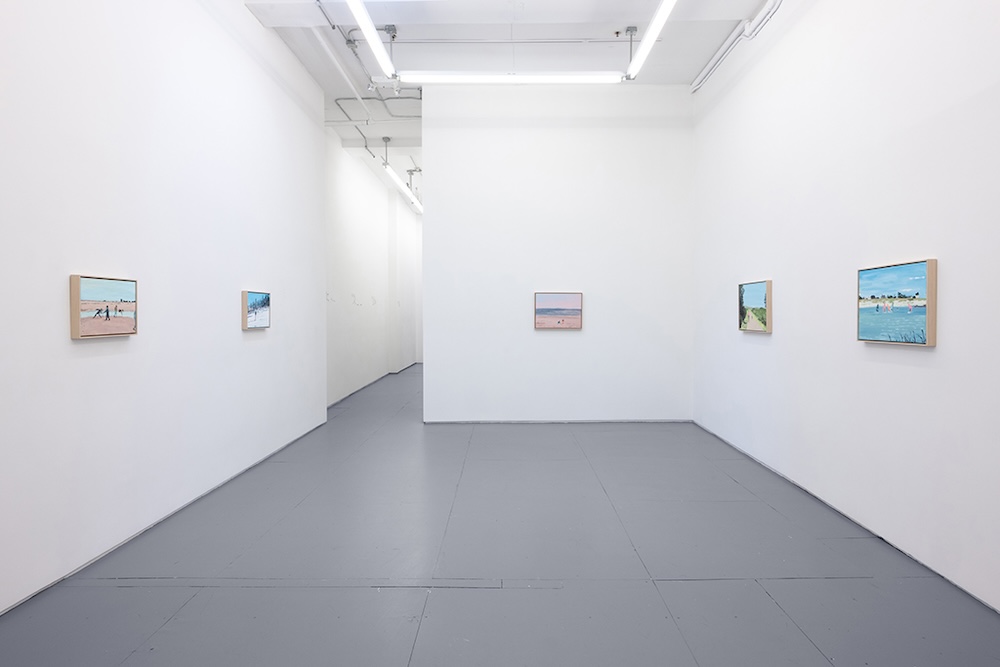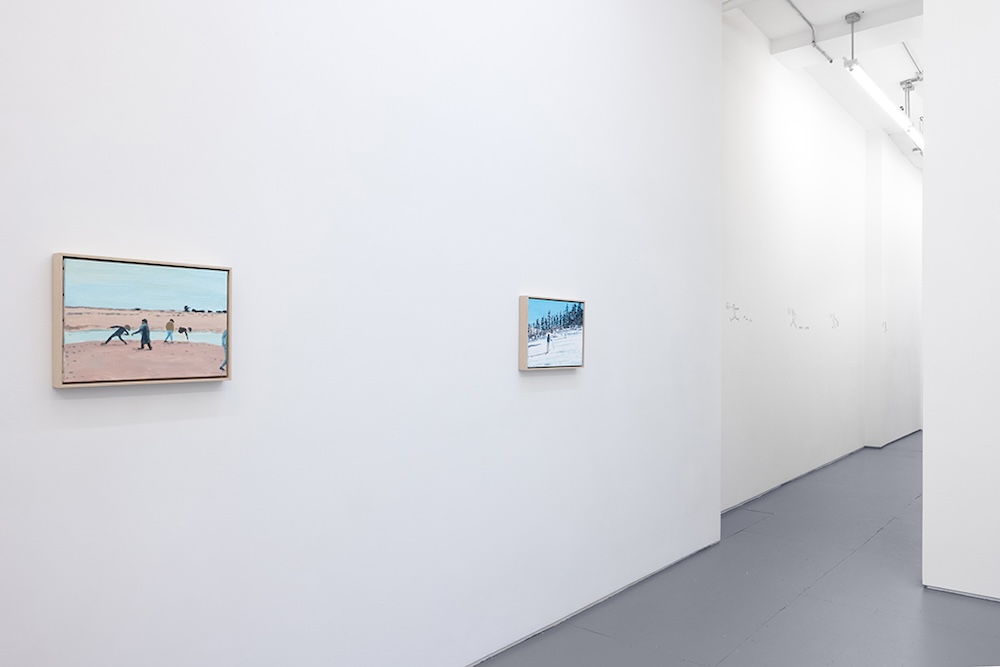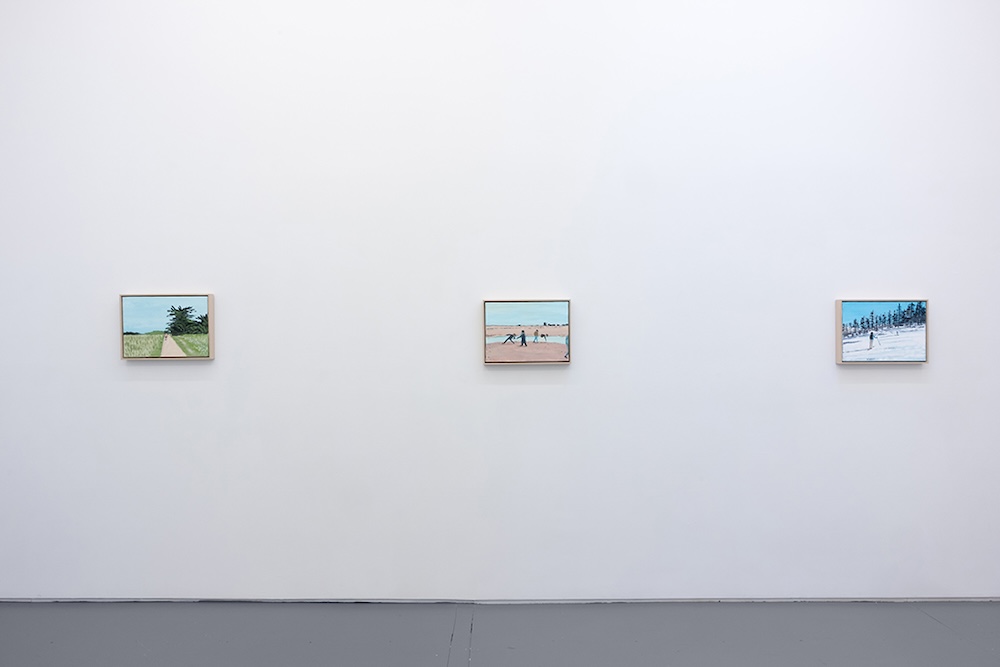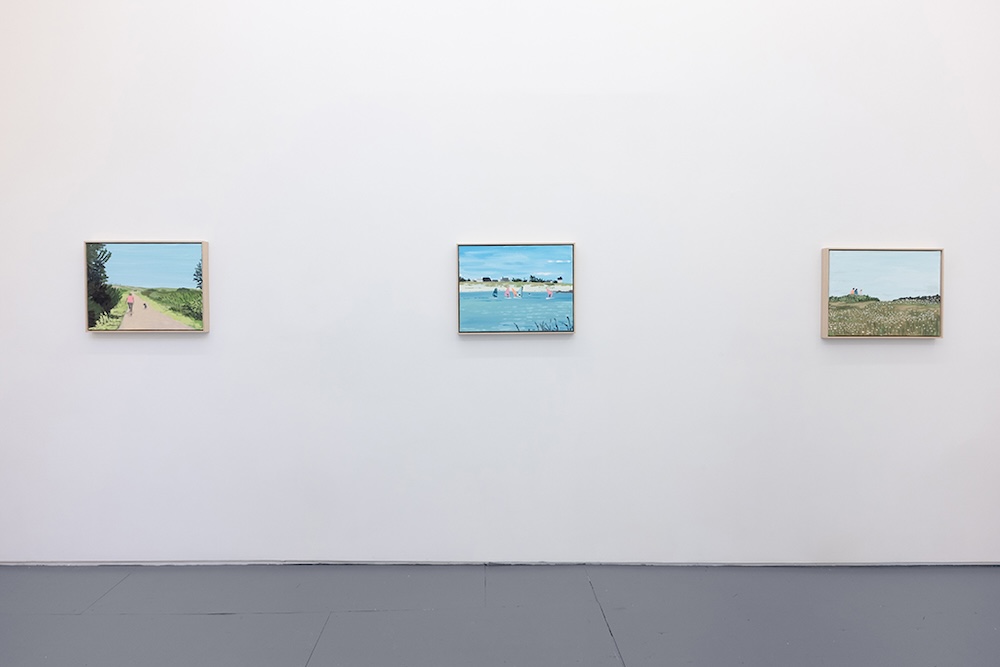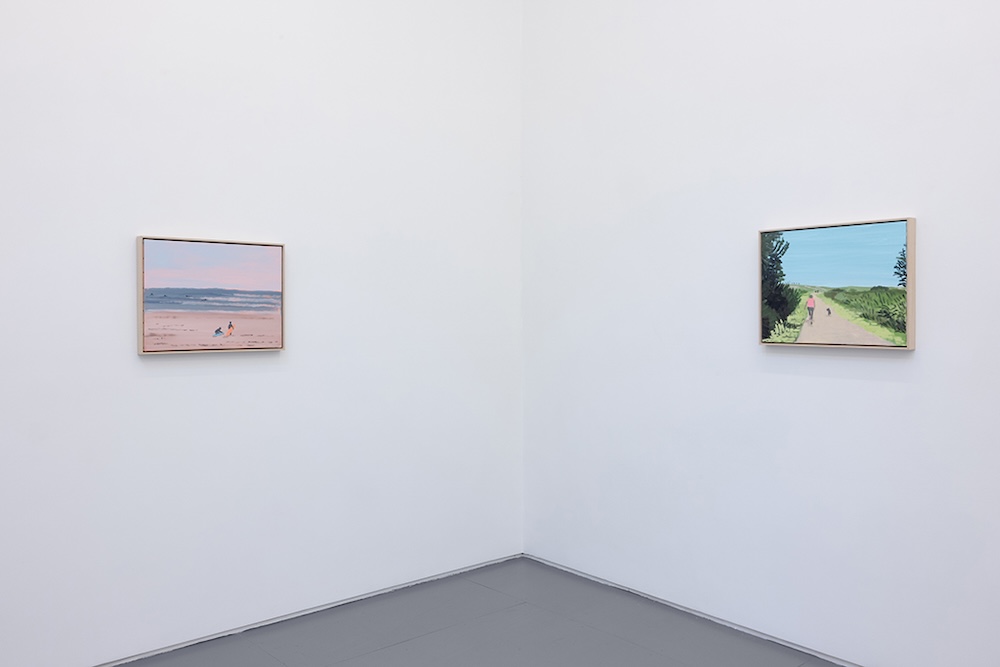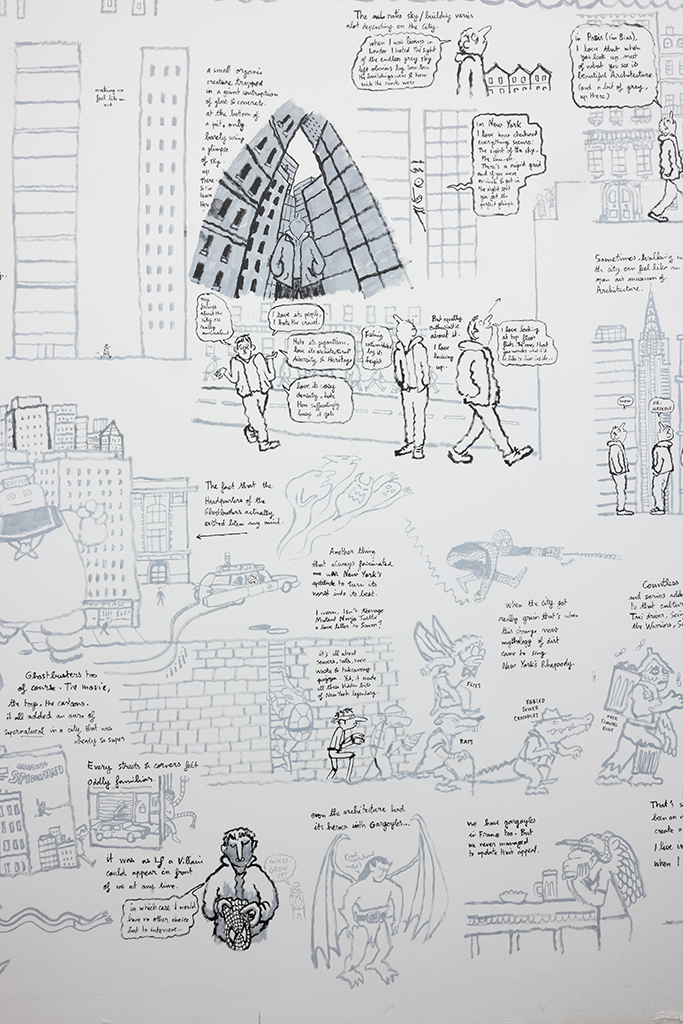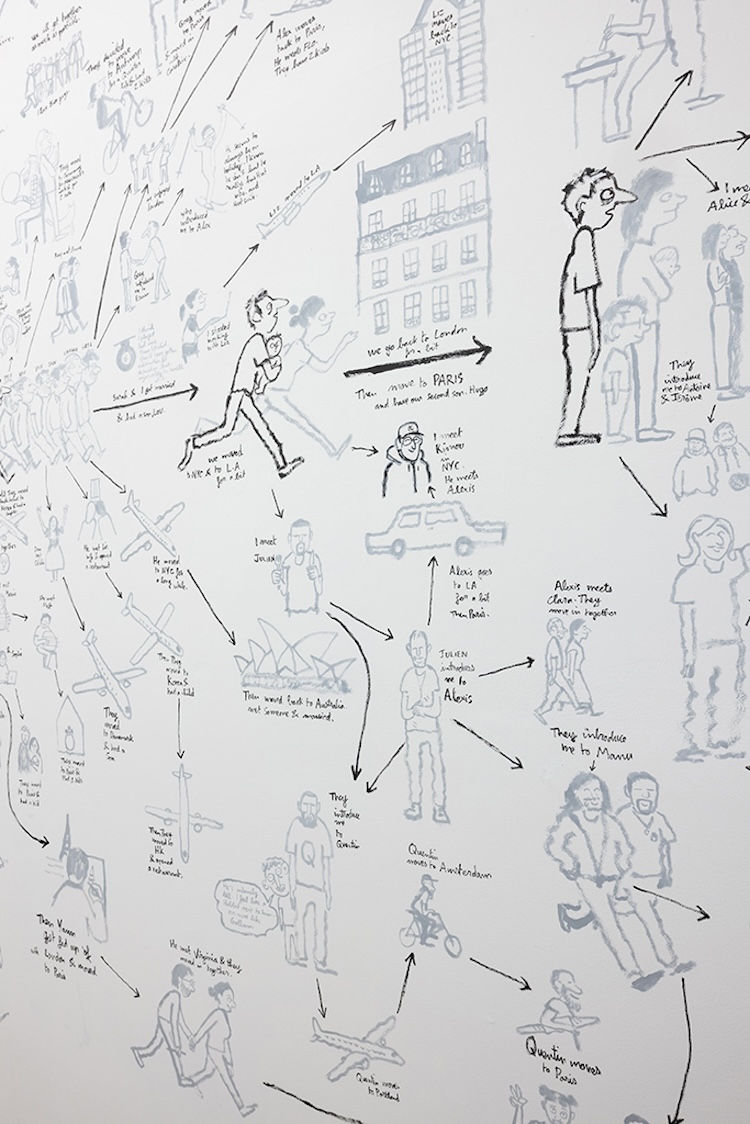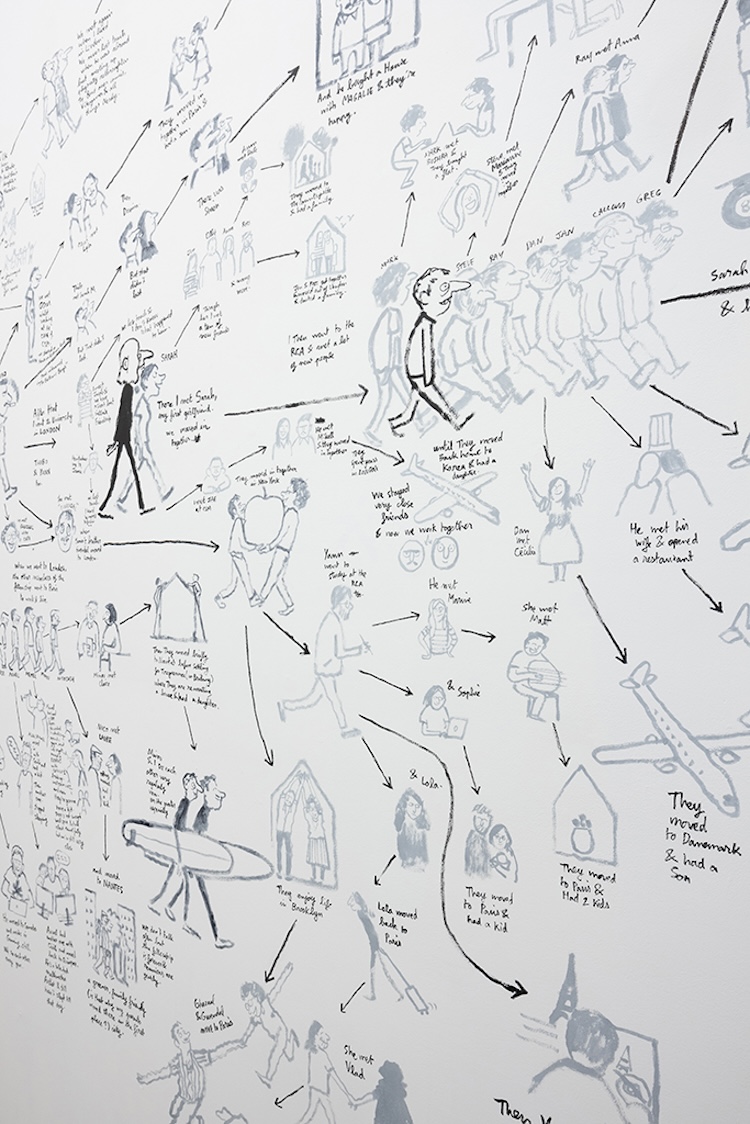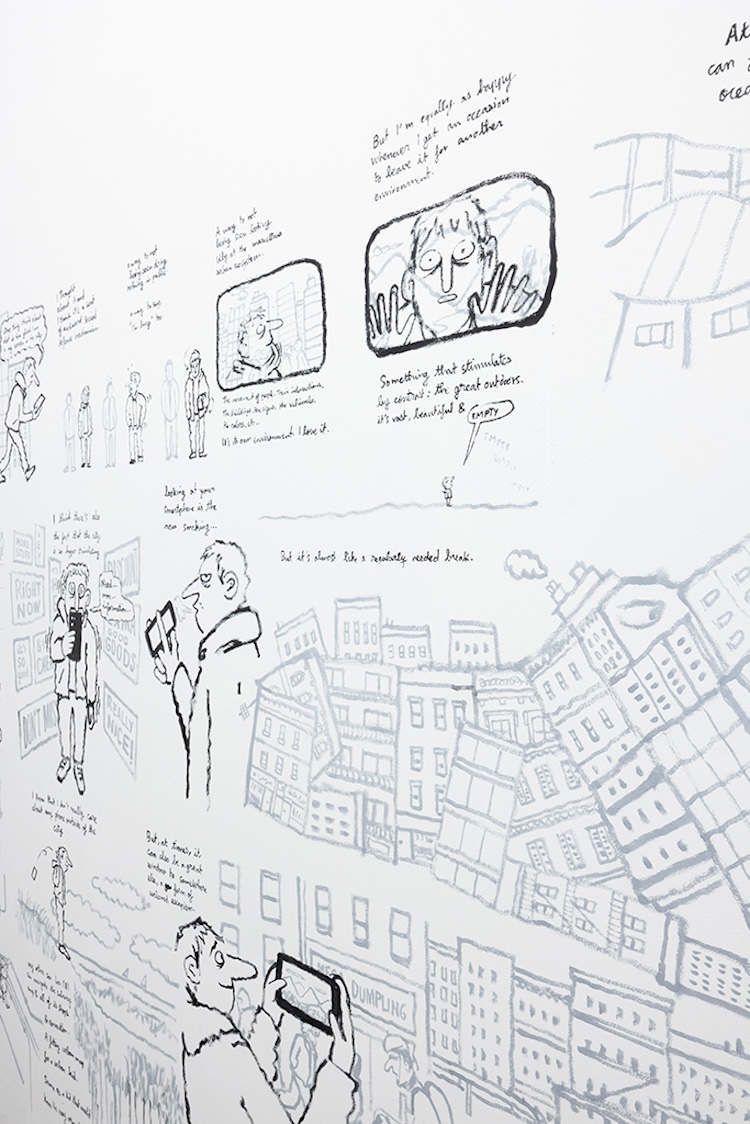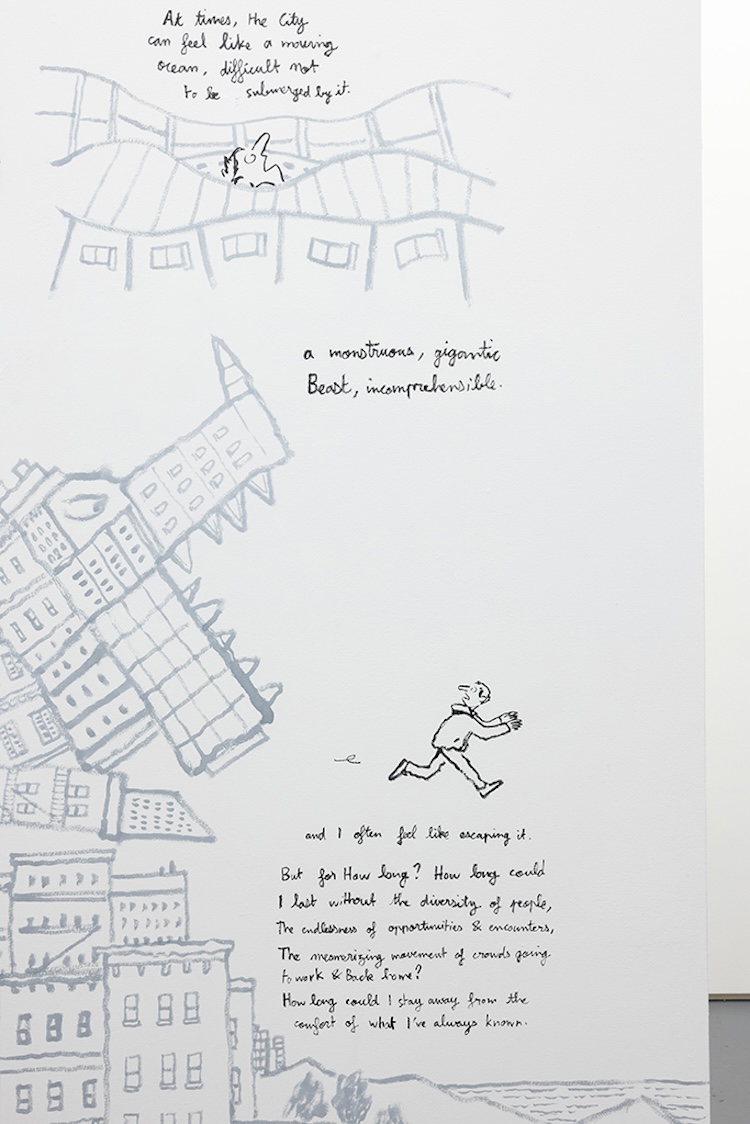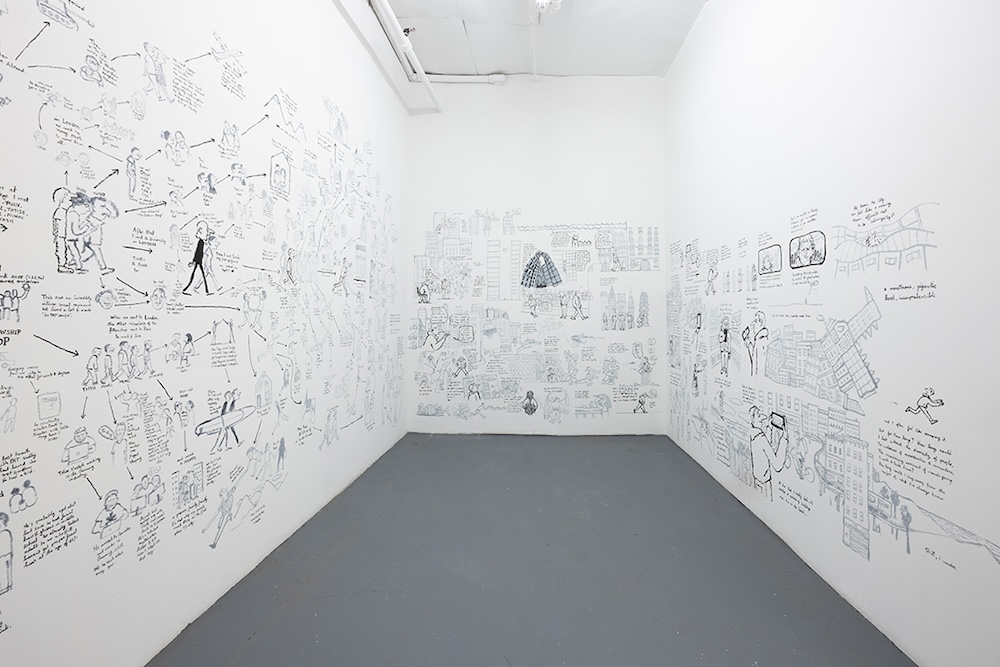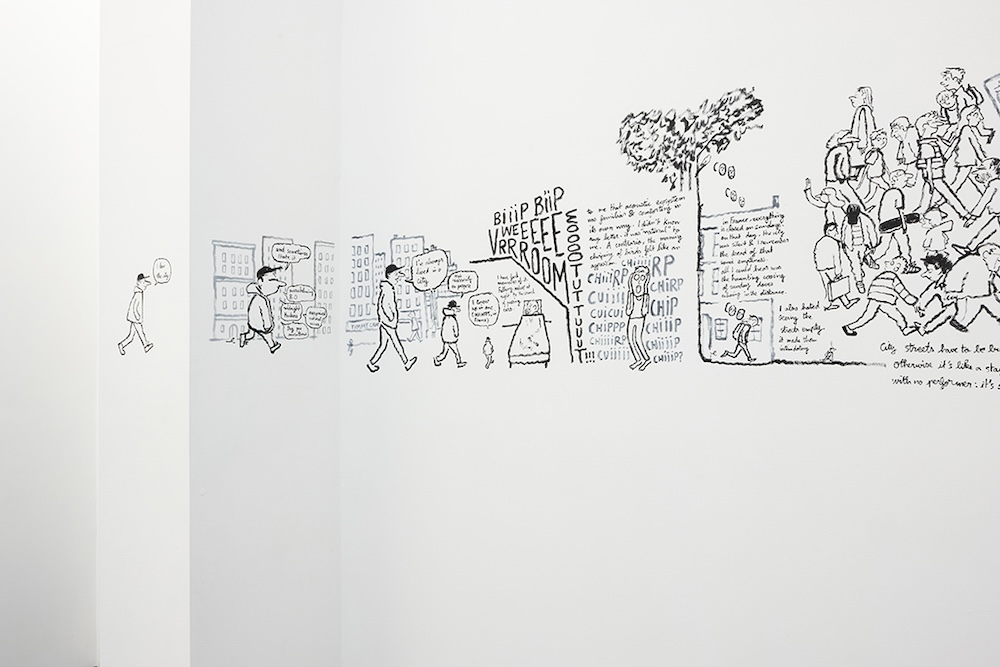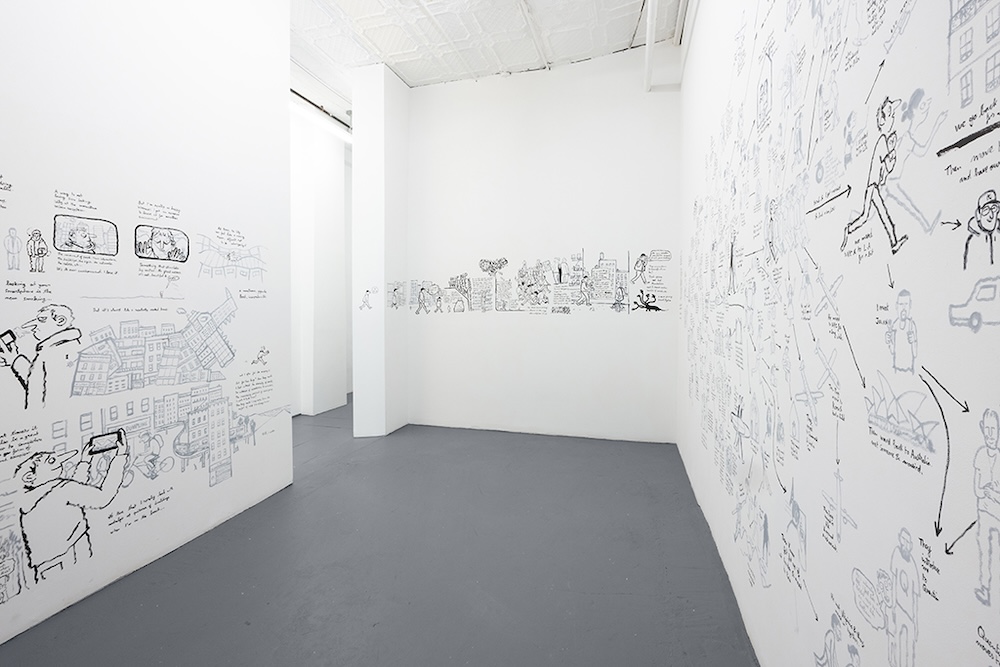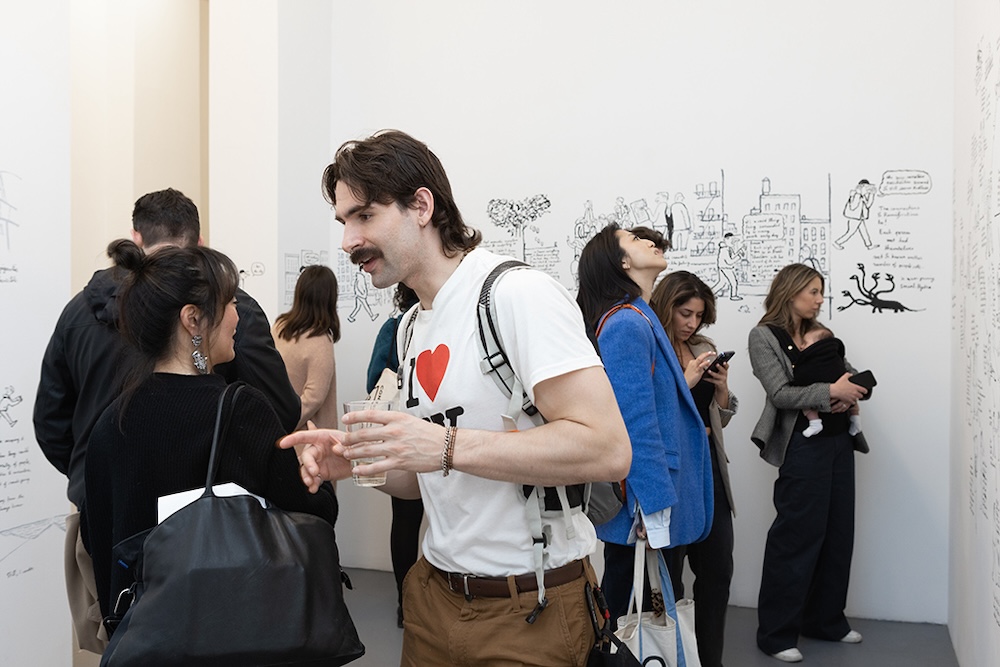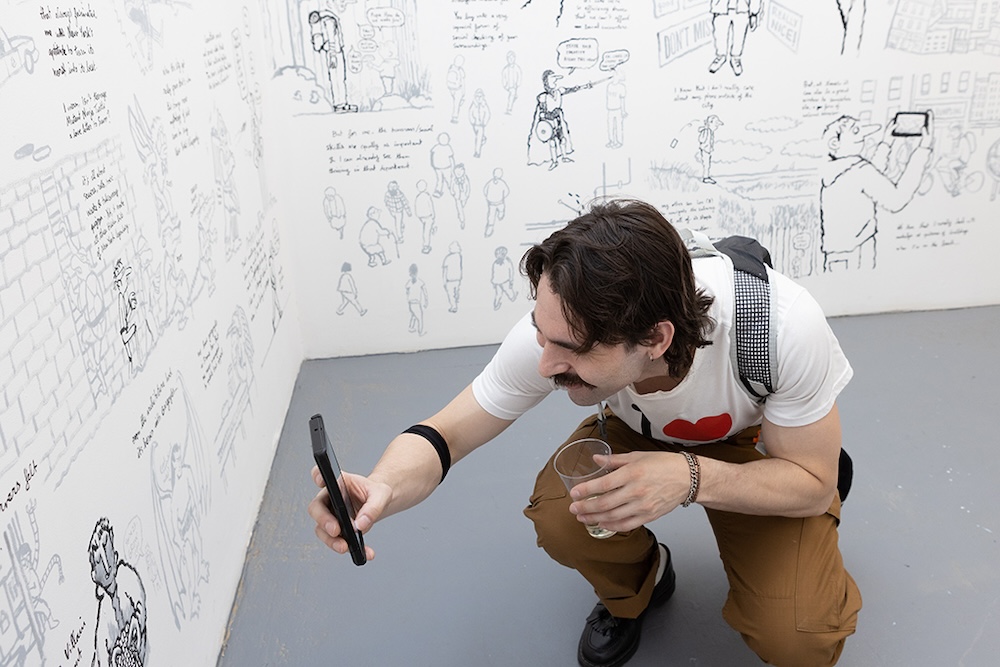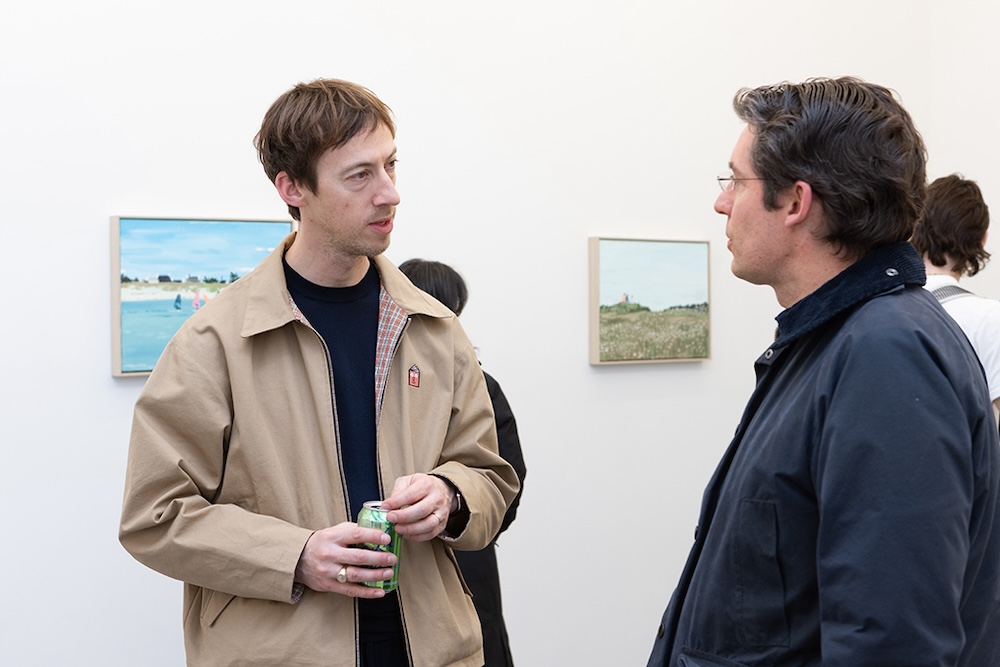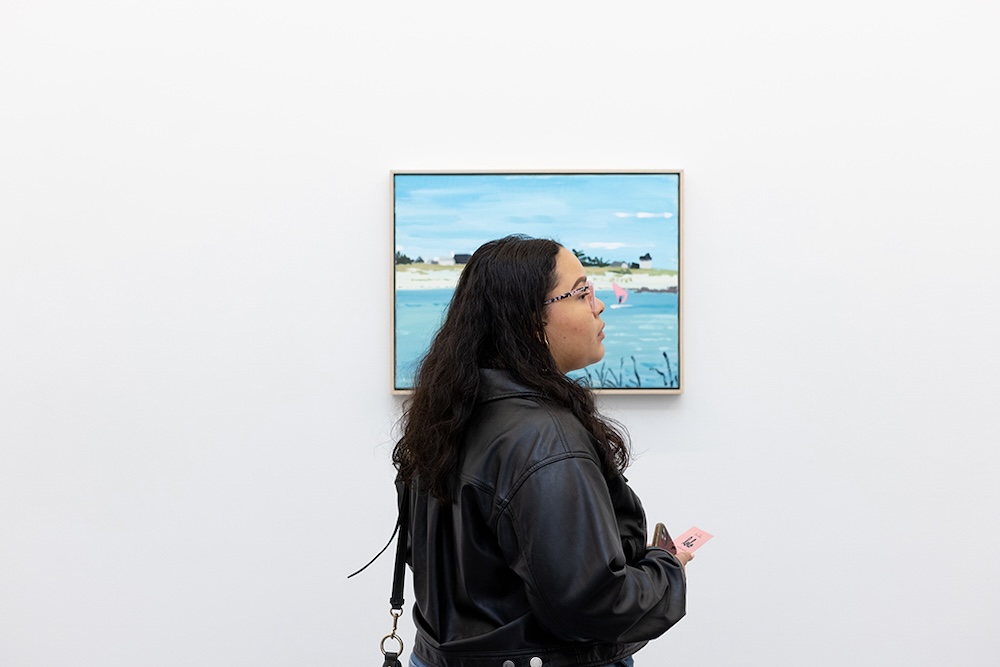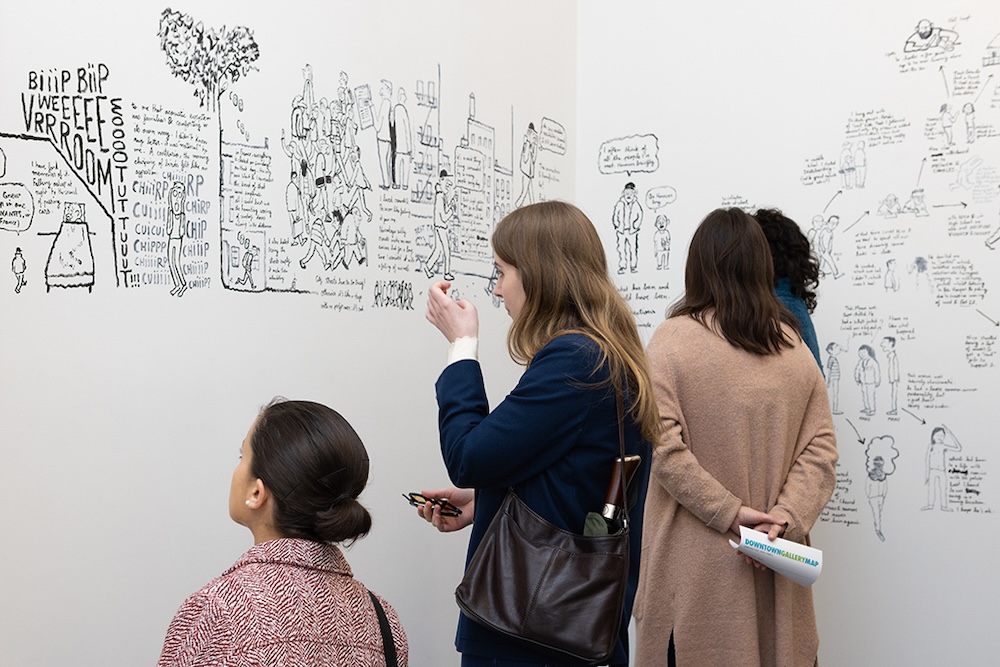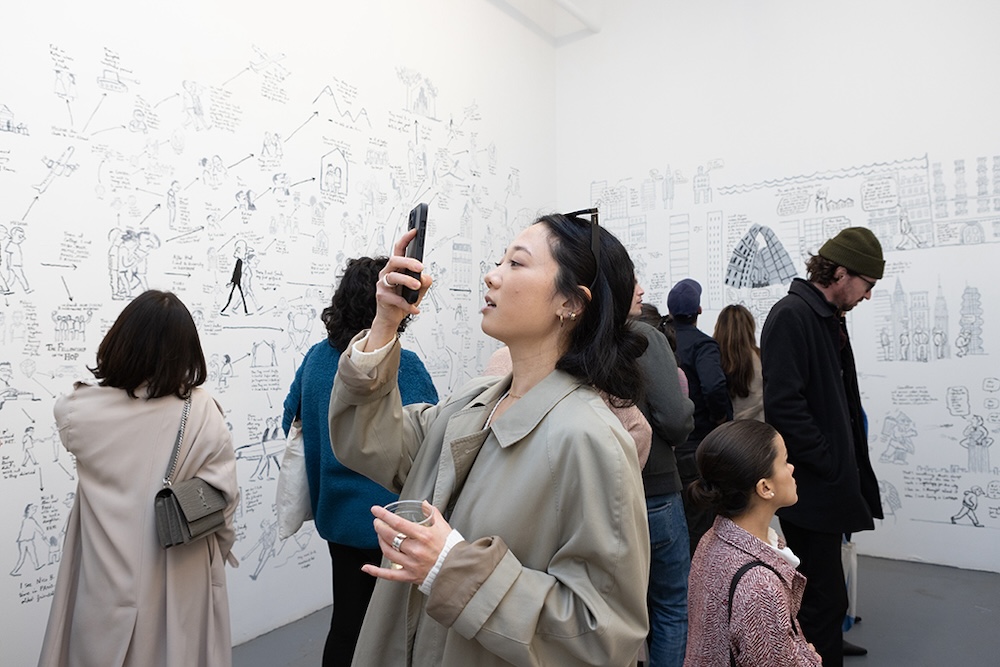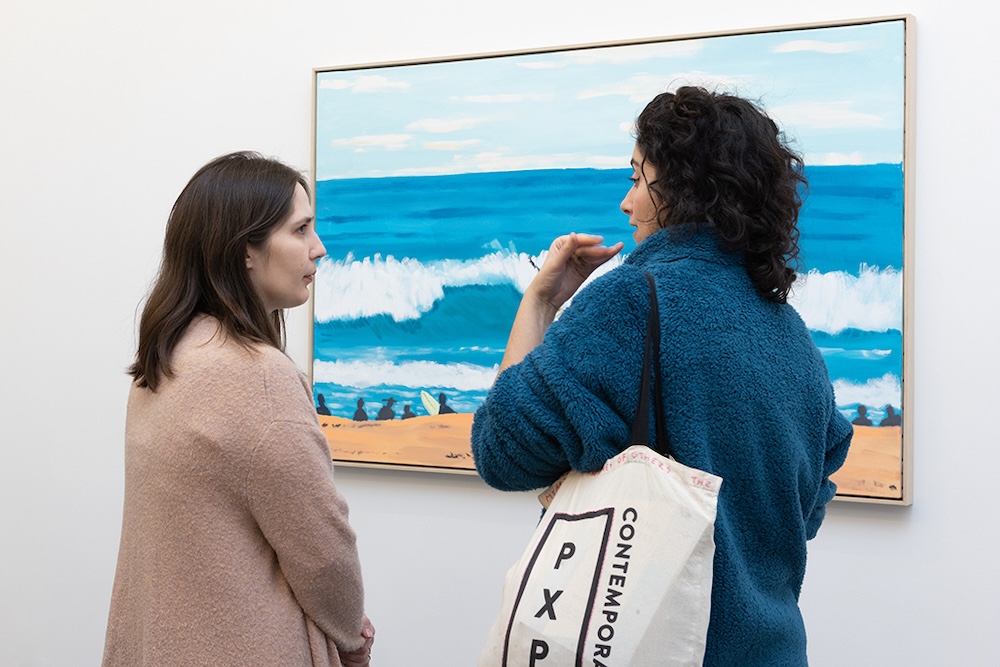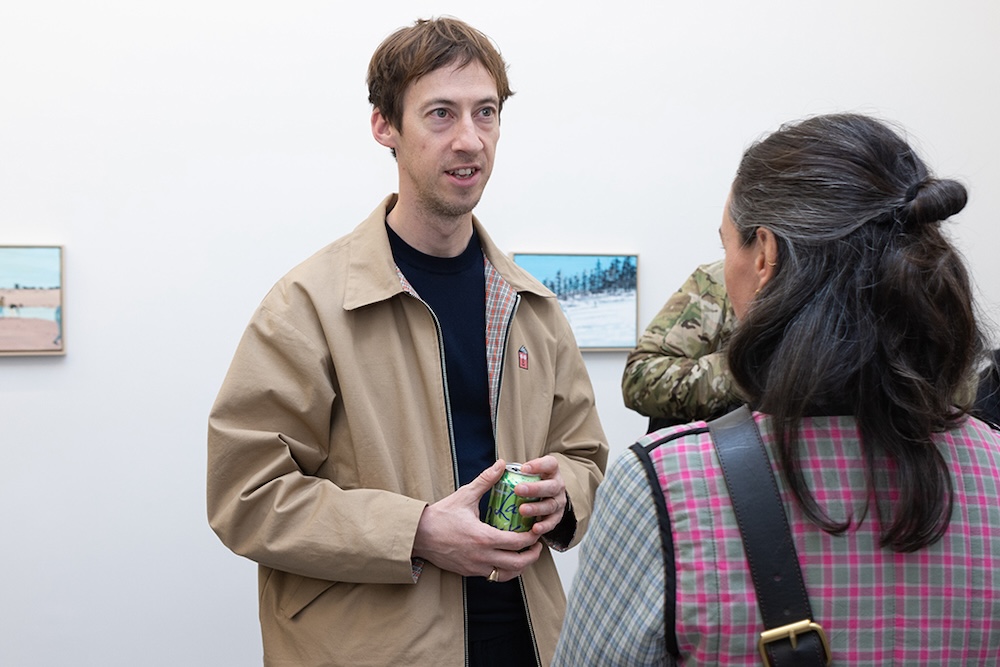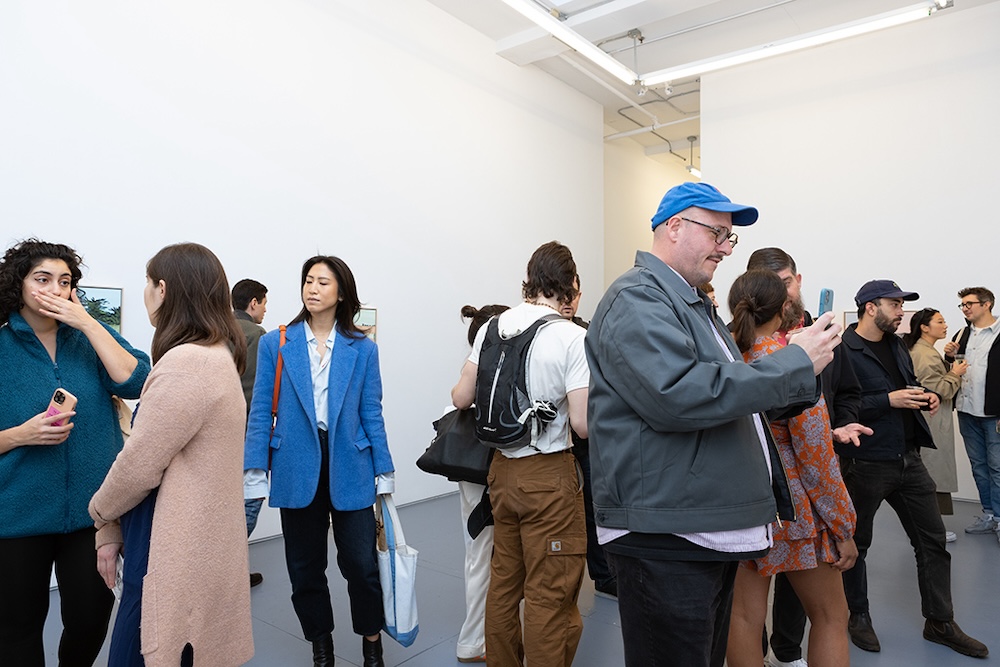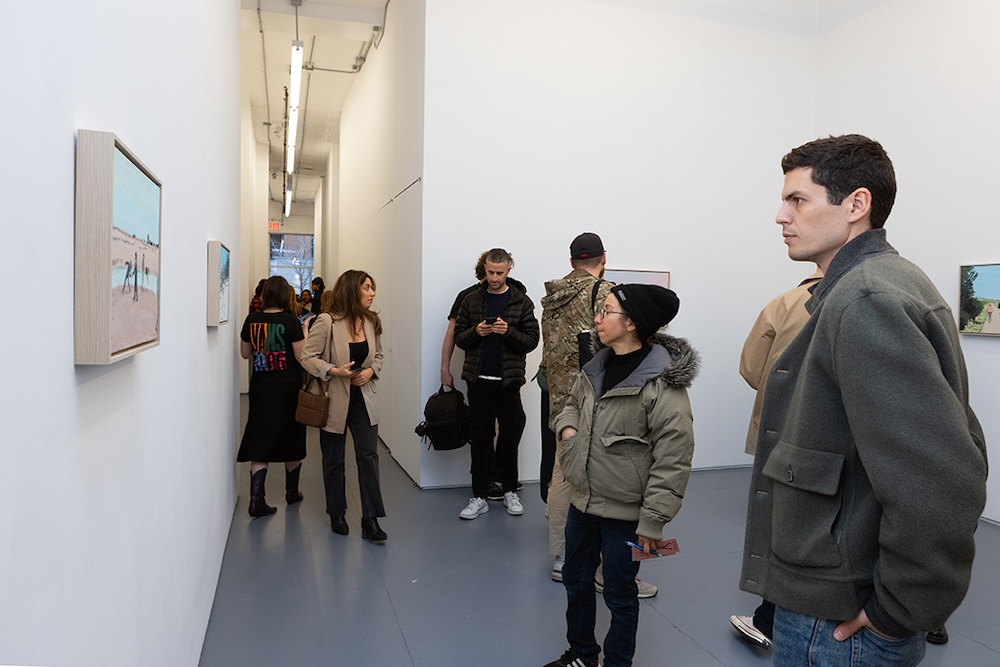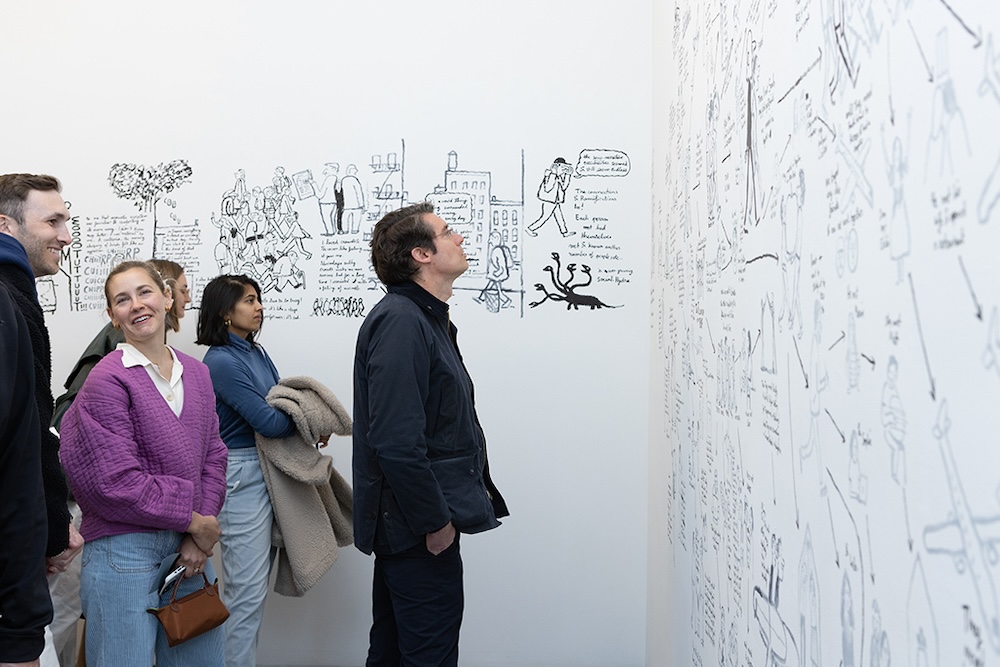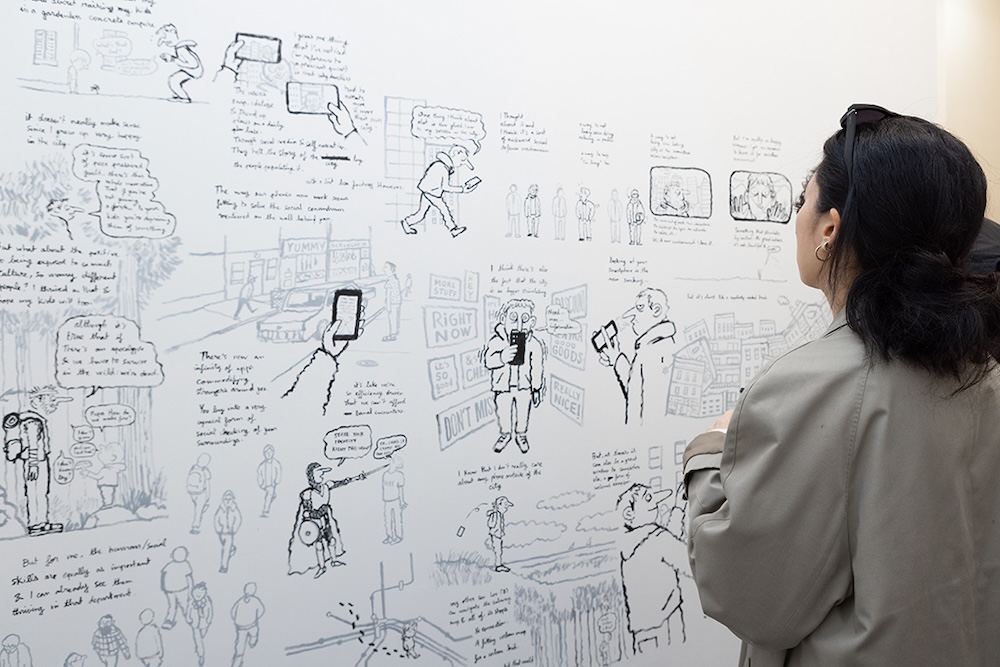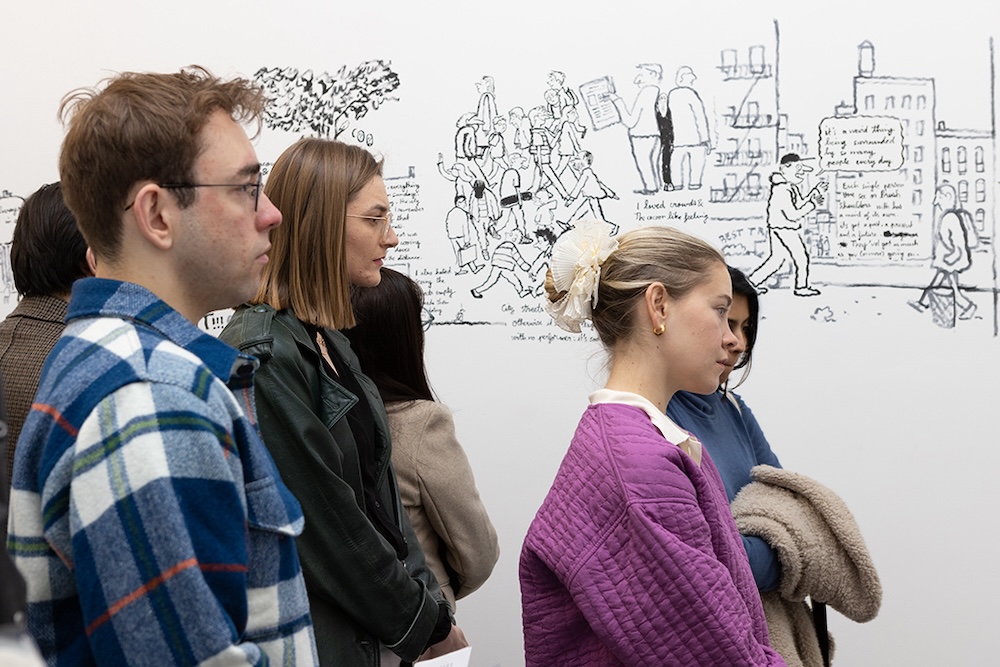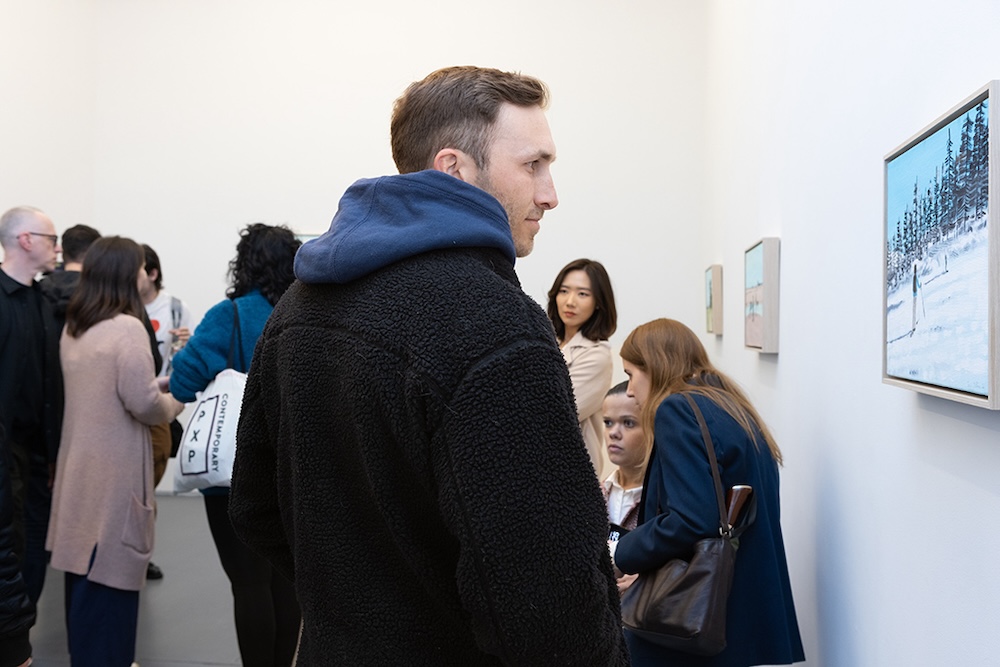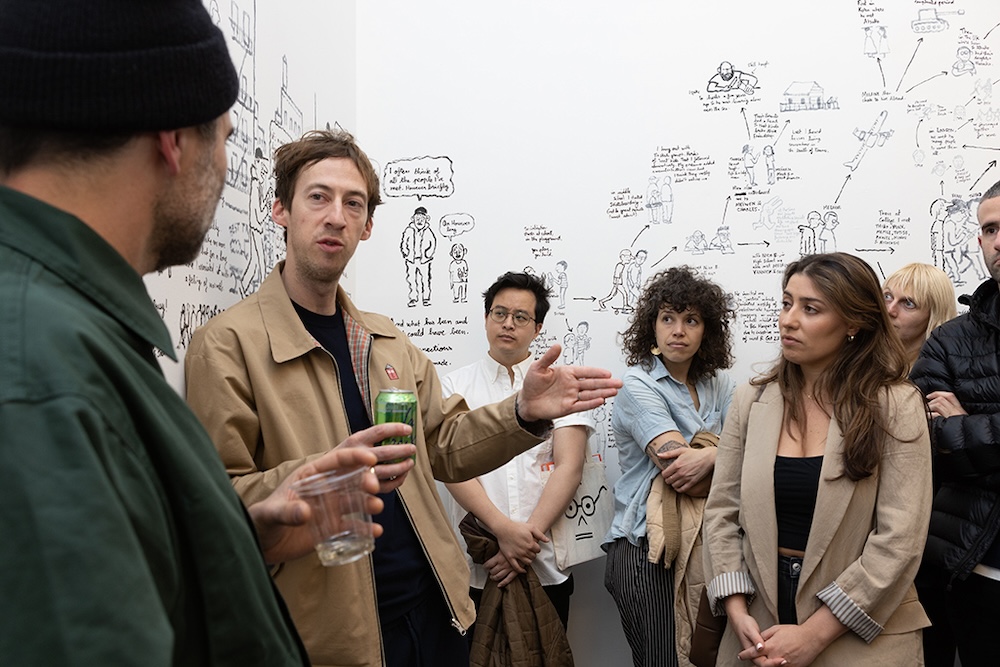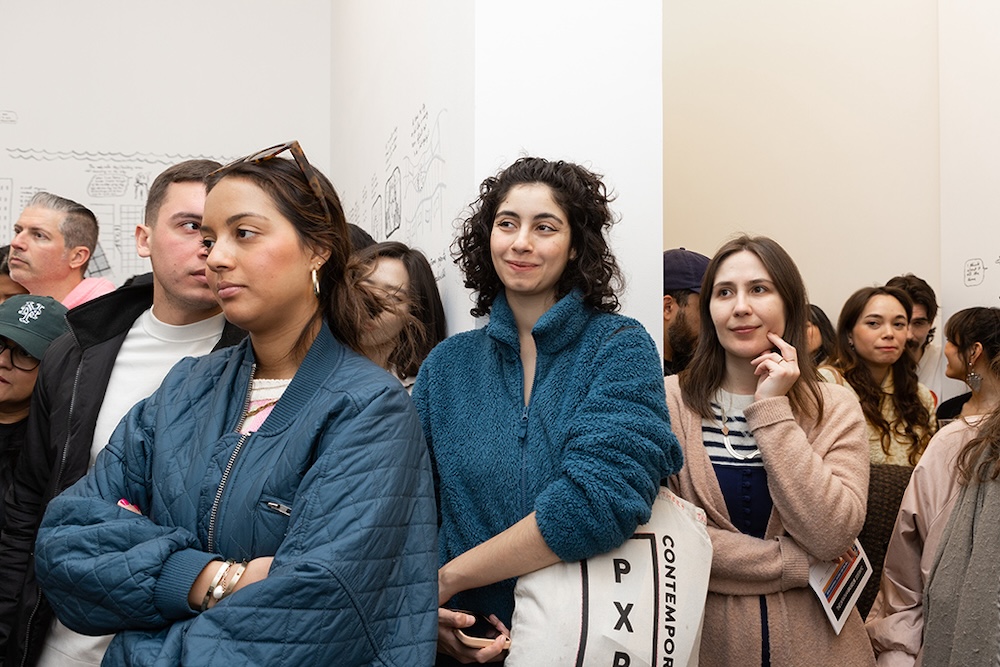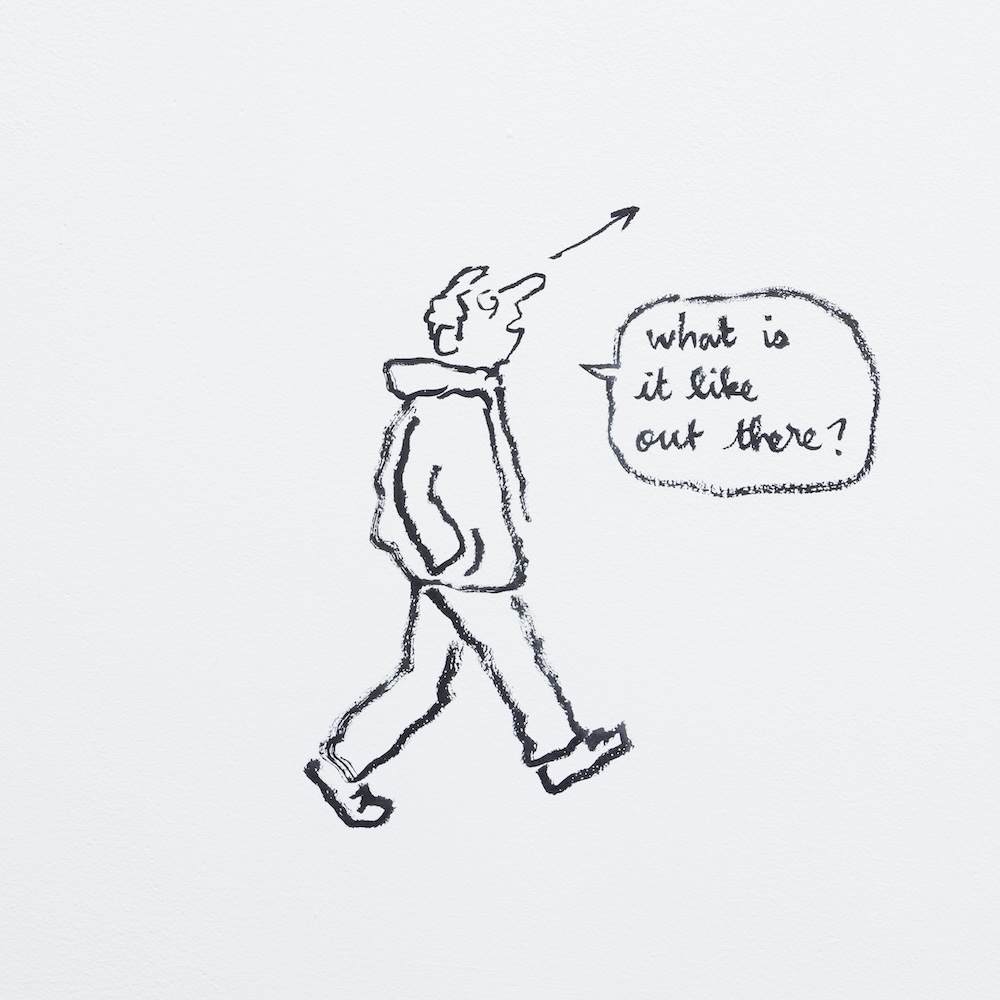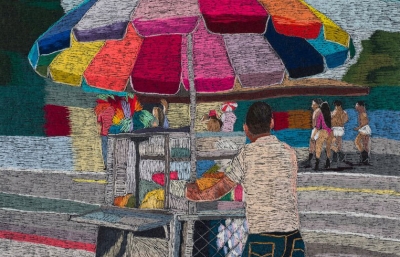What do we want in life? Or, more specifically, where do we believe our dreams and desires can be fulfilled? Artist Jean Jullien has been wondering whether he’s better off in the peaceful countryside, with all the insects and the animals, or if he ought to stay put in the bustling cities he’s called home, taking deep breaths of smoggy air.
In his latest solo exhibition at Hashimoto Contemporary NYC, the artist offers sweet and humorous commentary over the paradox between desiring a calm, peaceful life in the countryside while craving the nightlife and company of the city. Before the exhibition opened, Jullien spoke with HC’s Katherine Hamilton about his inspiration for the exhibition, why he feels so torn between city and country living, and how he stays humble through it all.
Katherine Hamilton: You’ve characterized your current artistic arch through a trilogy of museum exhibitions, one exploring your history, one your present, and one your future. This exhibition with Hashimoto Contemporary falls between the MIMA and NANZUKA shows, i.e. your present and your future. Can you say more about how this series of artworks characterizes this moment in your life?
Jean Jullien: The show at Hashimoto Contemporary explores the contrast between what one (myself, in this context) wants in life and what you actually end up going for. The exhibition is in two parts:
The first room will has drawings on the walls discussing life in the city and that love hate relationship we often have with it. I’ve always lived in an urban environment but constantly yearn for nature and the great outdoors. I’m addicted to people and to the idea of being surrounded by life. I find its social potential limitless and fascinating. And at the same time, I get so mad at people and I get frustrated by the noise, the pollution, the lack of greenery etc.
The second room features about 9 small colorful paintings of people enjoying being outdoors. It is more minimal and breathy to mark the contrast between the two states of mind. But, it is very much linked to the present part of the trilogy.
The exhibition is titled LOLO, and it comprises a series of paintings and an installation-esque drawing. When I tried to research where the title could have come from, Google Translate told me it’s the english version of “mort de rire,” meaning it mistakenly thought the title was “Lolol.” What is the context for “LOLO” here?
The title actually refers to the location of the gallery: LOwer east side but doubling the LO to give it a nice ring. It also refers to the “low” mood I get at times in the city, “Low Low.” But, I wanted to make it playful and positive to reflect the show’s approach: There’s a lot of good in the urban environment. So, it’s a nice sounding word that reflects the ambivalence of my thoughts on the city.
In an interview with Evan of Juxtapoz from a few months ago, you mentioned that this future chapter of artmaking is about escapism, encompassing all your anxieties about the world. And yet, your work doesn’t “feel” anxious—it’s lively, bustling, at times crowded or action-filled, sure, but not anxiety inducgin. How do you balance the tone of your paintings with the anxiety you feel that is prompting the thoughts of escape?
I switch mediums and locations as much as I can and thrive from variation. I’ll paint as much as possible, inspired by the seaside and the outdoors, then will get back to the city and ruminate on the noise, the density, and this will inspire images or commentaries.
The blended work in LOLO touches on the paradox of seeking freedom from urban life yet longing for the companionship offered in dense cities. Do you find your artistic output changes when you’re in one setting versus another?
Yes, I think my work definitely varies based on my surroundings. I work by reaction most of the time. In nature, I’ll see something beautiful and will want to draw or paint it. I’ll want to relive the moment by recreating it. It’s therapeutic.
In an urban environment, I’ll be mainly stimulated by negativity: Something will bother me, make me tick, and I’ll want to find a playful way to deal with it. So, I’ll use comedy as much as I can to find a twist to the situation, to make fun of it and turn the negative into positive.
I remember you saying that you draw a lot at the beach because it’s this place where the norms of city society are subverted. Do you still find yourself drawing there?
I find places of outdoor leisure to be really funny and inspiring because they sit in the middle of the two parts explored in LOLO. They’re social spaces in nature. People behave almost like they would in the city, but not quite. They will get super angry at someone for walking too close to their towel but the minute after will lay comfortably and doze off like a happy baby.
What’s your form of escape?
Historically it’s always been drawing and reading comic books. But recently it’s been more surfing and playing Baldur’s Gate 3.
In interviews you often say that you have to stay humble or that you’re trying to stay humble about your production. What things in daily life keep you humble?
Oh, I think everybody should be humble! I think Sarah (my wife) keeps me humble when I’m not! But, in all seriousness, I consider myself so lucky to be able to do what I do on a daily basis and to have the support of people who follow my work. It’s crazy when you think about it. I just want to be worthy of it and to keep working hard in order to keep that audience.
LOLO is on view through Apriol 27th at Hashimoto Contemporary NYC, 54 Ludlow Street. Installation and opening night images were taken by Heather Qu

